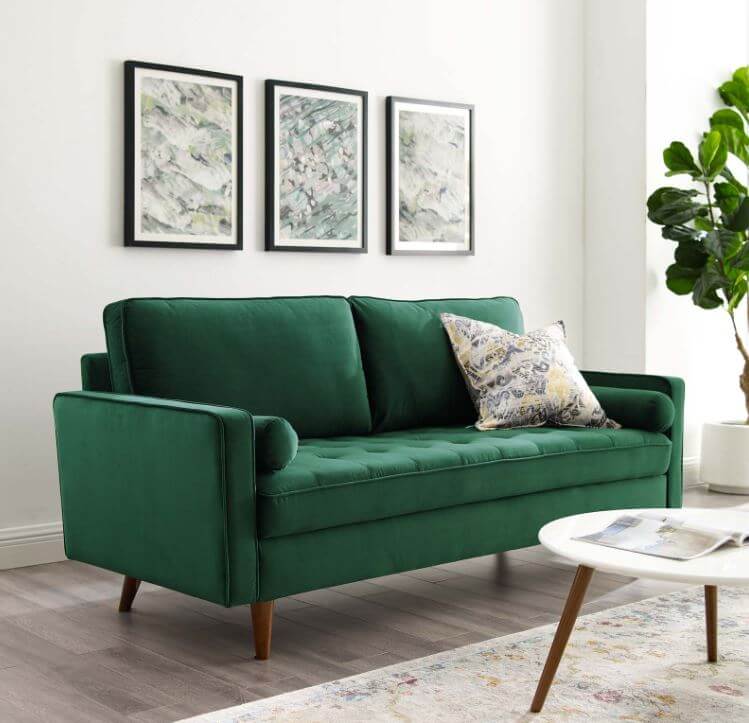Is your sofa looking tired, stained, or out of sync with your current interior style? Don’t be too quick to toss it out—sofa upholstery might be the miracle makeover it needs. A well-loved but worn-out sofa can be dramatically transformed into a statement piece with the right fabric, color, and craftsmanship. In this post, we’ll take you through the magic of before-and-after upholstery transformations, why it’s worth considering, and what to keep in mind before you start.
Why Upholstery Over Replacement?
At first glance, replacing an old sofa might seem like the easiest fix. But there are several compelling reasons to consider reupholstering instead:
Sentimental value: Many pieces have personal or historical significance and are worth preserving.
Better craftsmanship: Older sofas often have sturdier frames than many mass-produced modern ones.
Customization: Upholstery lets you choose every detail—fabric, color, texture, trim—tailored exactly to your style.
Sustainability: Reupholstering keeps furniture out of landfills and reduces the carbon footprint of buying new.
Think of it as giving your sofa a second life—with a whole new look.
Before-and-After Case Studies That Inspire
The Mid-Century Makeover
Before: A once-stylish 1960s teak-frame sofa sat dull in a dusty beige fabric that had faded and stained over time. The cushions were sagging, and the piece was almost unrecognizable from its former glory.
After: With new high-density foam cushions and a fresh upholstery in a mustard-hued boucle fabric, the sofa regained its retro charm. Paired with walnut legs and brass accents, it now anchors a mid-century modern living room.
Key Takeaway: Don’t underestimate the power of bold fabric choices—especially with clean-lined vintage frames.
The Family Heirloom Revival
Before: A traditional tufted sofa passed down from a grandmother looked drab in its outdated floral print. Despite its solid hardwood frame, the style no longer suited the owner’s contemporary space.
After: Reupholstered in a neutral linen blend with brushed nickel nailhead trim, the piece became a timeless blend of old and new. Additions like new foam padding and re-tightened springs ensured comfort without losing character.
Key Takeaway: Classic shapes can adapt beautifully to modern interiors with the right neutral palette.
The Budget Beauty Transformation
Before: A secondhand sofa from a thrift store had potential but suffered from faded microsuede and torn armrests.
After: With a durable polyester-blend fabric in slate gray and restructured cushions, the piece became a showpiece in a budget-conscious apartment.
Key Takeaway: Even low-cost sofas can look high-end with affordable upholstery solutions.
What to Consider Before Reupholstering Your Sofa
Before diving into your own transformation, here are some practical factors to evaluate:
Frame Quality
If your sofa has a solid wood frame and well-constructed joints, it’s a great candidate. Wobbly, hollow, or particleboard frames often aren’t worth the investment.
Cost vs. Replacement
Custom upholstery can range from $500 to $2,500 depending on fabric, labor, and repairs. Compare this to the cost of a new sofa—especially if you’re eyeing a custom or designer piece anyway.
Fabric Selection
Choose fabric not just for aesthetics but also for function:
Pets/kids? Go for stain-resistant performance fabrics.
Statement piece? Velvet, linen, or patterns add drama.
Minimalist style? Neutrals in high-quality textures work best.
Timeline
Reupholstering isn’t instant. Depending on the upholsterer and complexity, you may wait a few weeks—worth it for a one-of-a-kind result.
DIY vs. Professional Upholstery
Feeling crafty? DIY upholstery kits and tutorials are widely available. However, if your sofa has complex shapes, tufting, or structural damage, it’s best to leave it to the professionals.
Pros of hiring a pro:
Precision fit and finish
Access to commercial-grade fabric options
Repairs handled alongside reupholstery
Long-lasting results
Sofa Upholstery: A Sustainable Design Choice
In an era of fast furniture, giving your sofa a new life is a conscious and eco-friendly decision. Rather than contributing to landfill waste, you’re reclaiming resources and reducing consumption. Many upholstery shops even offer eco-friendly fabrics made from recycled materials or natural fibers.
It’s also a step toward slow decorating—choosing fewer, better-quality items that evolve with your style instead of being discarded at the first sign of wear.
Final Thoughts: The Wow Factor Is Worth It
A reupholstered sofa upholstery Abu Dhabi isn’t just furniture—it’s a personalized statement. Whether you’re restoring a family treasure, modernizing a thrift find, or simply breathing new life into a beloved piece, the transformation can be nothing short of dramatic.

